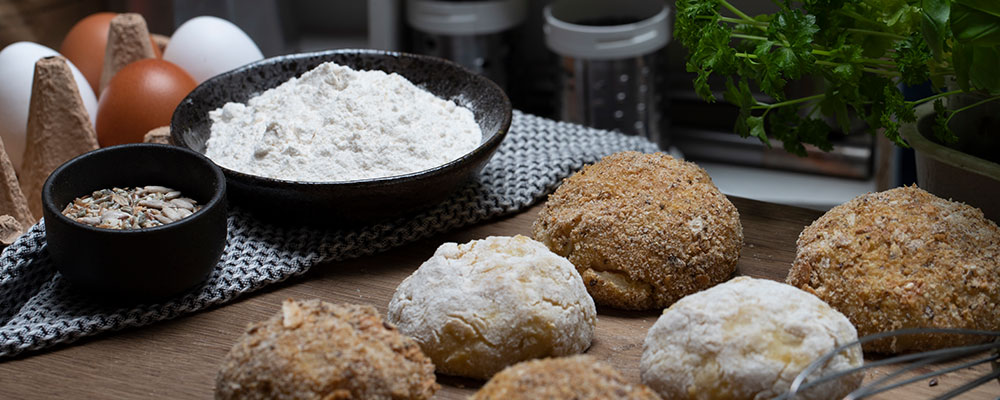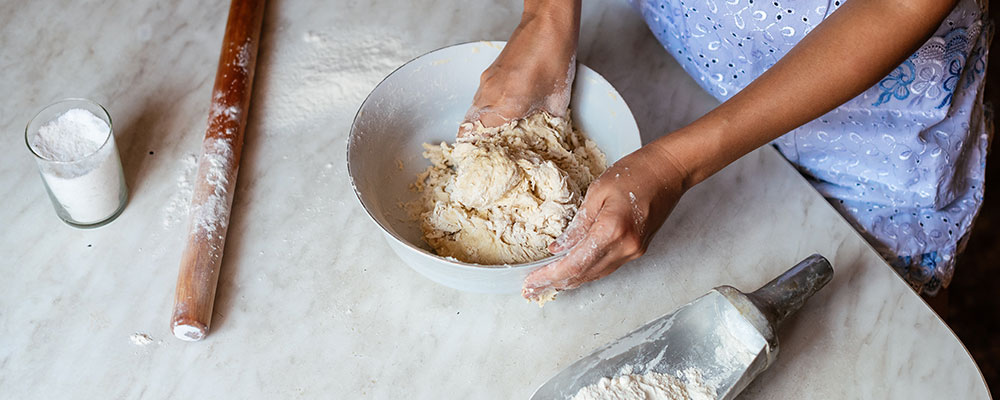Baking is an intricate science that demands a precise balance of ingredients, temperature, and time to produce the perfect loaf of bread, cake, or pastry. One of the key elements in achieving consistency and excellence in baking is flour performance. Flour, the backbone of baked goods, consists of proteins, starch, and minor components that determine the final texture, volume, and flavour of the product.
To optimise flour functionality, the baking industry relies on enzymes, nature’s biological catalysts that enhance dough development and final product quality. Among these, amylases and proteases play a crucial role in improving flour performance. Amylases break down starch into fermentable sugars, fuelling yeast activity, while proteases modify gluten proteins to improve dough handling and texture. Let’s explore how these enzymes contribute to superior baking results and why they are indispensable in modern baking practices.
The Role of Amylases
Breaking Down Starch for Enhanced Fermentation
Amylases are enzymes that hydrolyse starch into smaller sugar molecules, such as maltose and glucose. Flour naturally contains a small amount of amylase, but for controlled and efficient starch breakdown, additional fungal or bacterial amylases are often introduced. This enzymatic action is particularly crucial in yeast-leavened baked goods such as bread, as yeast requires fermentable sugars to produce carbon dioxide. The more readily available sugars, the better the yeast performs, leading to improved dough rise, better crumb structure, and a desirable crust colour.
Crust Browning and Flavour Enhancement
A well-baked loaf exhibits a golden-brown crust with a slightly sweet aroma—an effect largely influenced by the Maillard reaction. This chemical reaction occurs between amino acids (from proteins) and reducing sugars (produced by amylase activity) during baking, resulting in a flavourful, appealing crust. Without sufficient sugar from starch hydrolysis, the crust may appear pale, and the overall flavour profile of the baked product could be dull.
Extending Shelf Life and Improving Softness
Another critical function of amylases is their role in delaying the staling process. Starch retrogradation—the recrystallisation of gelatinised starch—leads to the hardening of bread over time. By breaking down starch into smaller dextrins and sugars, amylases reduce the rate of retrogradation, keeping the crumb soft for longer. This is especially beneficial in commercial baking, where maintaining product freshness is vital for extended shelf life.
The Role of Proteases

Gluten Modification for Dough Elasticity
Proteases are enzymes that break down proteins into smaller peptides and amino acids. In the context of baking, their primary function is to modify gluten, the protein network responsible for dough elasticity and structure. While gluten strength is essential for trapping gases during fermentation, excessive gluten development can lead to tough, chewy bread. Proteases help relax the gluten matrix, making the dough more extensible and easier to work with, particularly in high-protein flours.
For delicate baked goods like cakes, cookies, and pastries, excessive gluten strength can result in a dense, tough texture. Proteases selectively weaken gluten bonds, ensuring a tender crumb and a more desirable mouthfeel. This enzymatic modification is particularly valuable in soft cookies and shortbread, where minimal gluten development is preferred.
Reducing Dough Processing Time
In large-scale baking operations, time is a critical factor. Traditional dough conditioning methods often involve long resting periods to allow gluten to relax. Proteases accelerate this process, reducing dough mixing and resting times. This efficiency not only saves time but also enhances production consistency, ensuring uniform product quality across batches.
Improving Dough Handling for Automated Baking
With the rise of automated baking systems, dough consistency is more important than ever. Variability in flour quality can lead to unpredictable dough behaviour, affecting machinability and final product uniformity. Proteases help standardise dough performance by compensating for fluctuations in gluten strength, ensuring smooth processing in high-speed production lines. This is particularly advantageous for mass-produced bread, biscuits, and laminated pastries.
The Synergistic Effect of Amylases and Proteases

While amylases and proteases perform distinct functions, their combined action in flour treatment is what truly enhances baking performance. The breakdown of starch by amylases supplies yeast with fermentable sugars, ensuring proper fermentation, while proteases regulate gluten strength, optimising dough texture.
For example, in the production of sourdough bread, amylases ensure a consistent sugar supply for prolonged fermentation, leading to a well-developed flavour profile. Simultaneously, proteases help loosen the gluten network, making the dough more extensible, which is essential for achieving an open crumb structure. This interplay between starch and protein modification is what allows bakers to craft high-quality, artisanal-style bread with ease.
Similarly, in industrial biscuit production, both enzymes contribute to improved dough spreadability and uniform baking. Amylases prevent excessive sugar crystallisation, maintaining biscuit softness, while proteases ensure that the dough does not develop excessive toughness. By controlling these key properties, manufacturers can achieve consistent texture and quality across large batches.
Choosing the Right Enzymes
Not all amylases and proteases function the same way. Their activity depends on factors such as source (fungal, bacterial, or plant-derived), temperature tolerance, and specificity towards different substrates. Selecting the right enzyme formulation is essential to achieving desired baking outcomes.
Factors to Consider When Choosing Amylases:
- Source: Fungal amylases operate effectively at lower temperatures, making them ideal for pre-fermentation processes. Bacterial amylases are more heat-stable and work well during baking.
- Activity Level: The degree of starch breakdown must be controlled to prevent excessive sugar production, which could lead to overbrowning.
- Application: Bread baking requires amylases that provide a steady sugar release, while biscuit production may need enzymes that influence dough spreadability.
Factors to Consider When Choosing Proteases:
- Specificity: Some proteases target only gluten proteins, while others break down non-gluten proteins as well. The choice depends on the desired dough modification.
- Dosage: Overuse of proteases can weaken the dough excessively, leading to poor structure. Proper dosage is crucial for optimal performance.
- Compatibility: Proteases should complement other dough improvers such as emulsifiers and oxidising agents to ensure balanced dough conditioning.
Conclusion
Amylases and proteases have revolutionised modern baking, offering natural, effective solutions for improving flour performance. By optimising starch and protein functionality, these enzymes help bakers achieve superior fermentation, better dough handling, enhanced flavour, and extended shelf life. Whether in artisanal bread-making or large-scale commercial production, the application of these enzymes ensures consistent, high-quality baked goods.
At Biolaxi Enzymes, we specialise in scientifically developed amylase and protease formulations tailored to the baking industry’s needs. Our high-quality enzyme solutions help bakeries worldwide produce better, more consistent products while enhancing efficiency and sustainability. With a commitment to innovation and excellence, Biolaxi Enzymes is your trusted partner in elevating flour performance for outstanding baking results.




